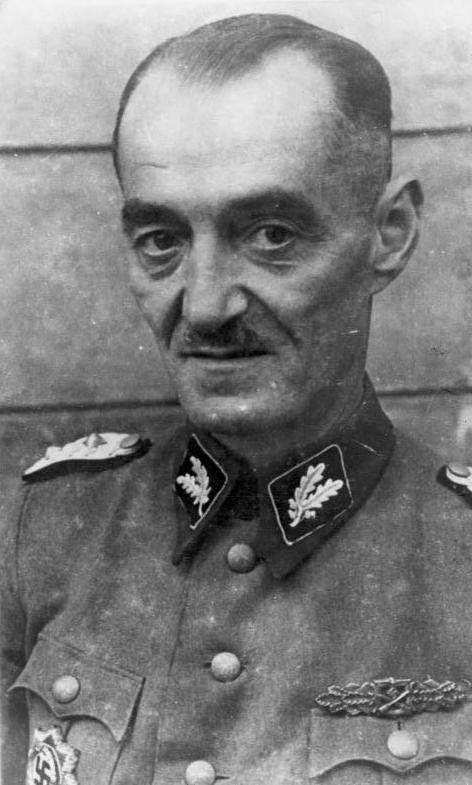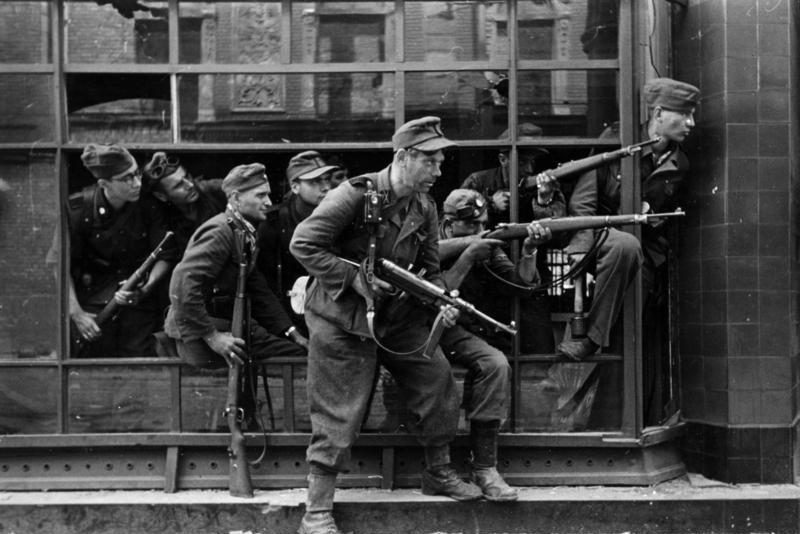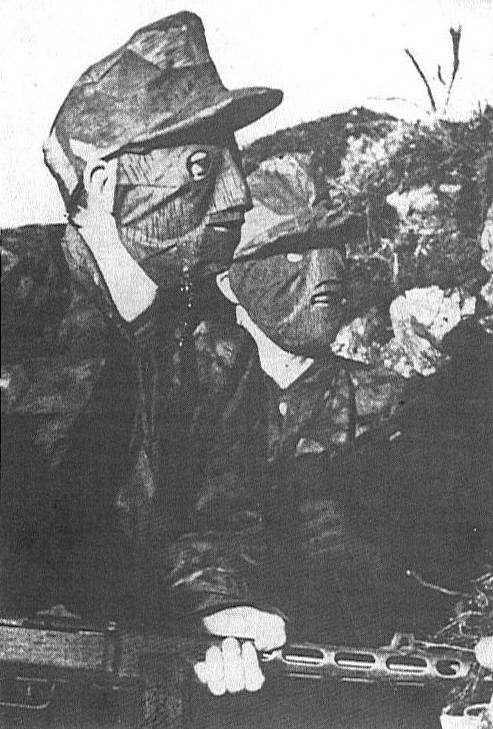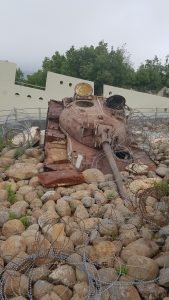Throughout the vast ranks of the Nazi regime, there was extensive list of murderous, genocidal figures. However, there were some who were so sadistic and psychotic that they shocked their fellow Nazis to the core. There was a man whose cruel and sadistic reputation few in the second world war could compete with. A man who was one of the original Nazi party members and spent time in a concentration camp himself before wreaking carnage against innocent civilians on the Eastern Front. Described as a psychopathic killer, child molester, an expert in extermination and a devotee of sadism and necrophilia, his name was Oskar Dirlewanger.
Dirlewanger was born in the charming Bavarian city of Würzburg, famous as being the center of the Franconian wine country. At the outbreak of WW1, he joined the Prussian Army on the Western Front and was active in the German invasions of France and Belgium and rounded off his service on the Eastern front in Southern Russia. As a ceasefire was declared, an order was given in the area Direlwanger was fighting that all German units would be moved to Romania as prisoners of war. Dirlewanger flat out disobeyed this order and led hundreds of German troops fighting in the area back to Germany.
According to Knut Stang, a German biographer, the first world war was a major factor that moulded Dirlewanger’s later life and his “terror warfare” methods, as “his amoral personality, with his alcoholism and his sadistic sexual orientation, was additionally shattered by the front experiences of the First World War and its frenzied violence and barbarism.”
After the crushing defeat of WW1, like many bitter former German soldiers, Dirlewanger joined the infamous and violent right wing paramilitary unit, the Freikorps, who effectively fought as mercenary or private armies against German communists. Dirlewanger was active in these fights, mostly in the regions of the Ruhr and Saxony. He also joined running street battles against Polish nationalists in the region of Upper Silesia. His passion for violence didn’t go unnoticed, and in a police report at the time, he was described as “a mentally unstable, violent fanatic and alcoholic, who had the habit of erupting into violence under the influence of drugs.”
He soon set up an armed group of local students in the city of Württemberg that would become known as the ‘Highway Watch’.
The story of one of the most infamous Nazi criminals was almost cut short on Easter Sunday, 1921, in the city of Sangerhausen, which had been occupied by a Communist militia group loyal to the Communist Party of Germany. Dirlewanger led an armoured train that moved towards the city and, in the ensuing fight, was grazed across the skull by a communist bullet. The communists withdrew after Direlwangers men were reinforced. He would go on to recieve honourary citizenship of the town and be crowned “liberator from the Red terrorists” when the Nazi party came to power.
In 1923, Dirlewanger became one of the original Nazis as he joined the Nazi Party and its SA militia. However, his career in the ranks of the Nazi party was far from clean. In the years leading up to the Second World War, Dirlewanger was repeatedly convicted for possessing illegal firearms, embezzlement and illegally driving a Nazi party vehicle whilst drunk. One of his most serious crimes was the rape of a 14-year-old child who was a member of the League of German Girls (the female version of the Hitler Youth). For this heinous crime, he was stripped of all military honours and kicked out of the Nazi party before being sentenced to two years in the Welzheim concentration camp.
Despite his crimes, Dirlewangers combat escapades had earned him a lot of friends with connections. Upon his release, he was soon given a reservist role back in the SS due to the intervention of high ranking SS figures who had served with him during the war and in the Freikorps years. However, to regain his original place would require earning it and Direlwanger soon found himself on the sunny shores of Spain.
At the outbreak of the Spanish Civil War, Dirleranger fought for almost three years with the German Condor Legion and was wounded three times in combat. This escapade, combined with further intervention by his SS and party friends, paved the way for his re-entry back into the NSDAP and reinstatement of military honours.
As World War II erupted, Dirlewanger promptly joined a unit that would receive a measure of infamy of its own, the Waffen-SS. Likely due to the abhorrent reputation of Dirlewanger and the incompatible ‘elite status’ of the Waffen-SS, before long Dirlewanger was given his own brigade that was known as Dirlewanger Brigade.
Initially, the brigade was assigned to an anti-partisan role and was composed mostly of small squads of convicted German poachers who would use their excellent tracking, shooting and bushcraft skills to hunt and kill groups of partisans on the Eastern Front. However, as the war progressed and the brigade became bigger, Dirlewanger was recruiting growing groups of Germans convicted for serious crimes like rape and murder, concentration camp inmates, psychotic patients from mental asylums, and Romani gypsy prisoners. The actions of the brigade would be defined by alcohol and drug abuse, looting, sadistic atrocities, rape, and gruesome mass murder. Behaviour which was tolerated by Himmler, the leader of the SS, who deemed such actions “necessary in the fight against sub-humanity.”
The unit’s first posting was a security role in a concentration camp in German-occupied Poland. Before long, Dirlewanger was accused of wanton acts of murder, corruption and rape of Jewish and Polish prisoners, which was a breach of Nazi law on “race defilement”. Dirlewanger was accused of randomly selecting Jewish women at the camp to be stripped and brutally beaten, before injecting them with strychnine, a strong form of rat poison, in order to watch them violently convulse to death in front of him and his friends for entertainment. Rumours also began to spread that Dirlewanger had dismembered Jewish women and boiled them with horse meat to make soap.
After repeated complaints from other SS units of shear banditry and chaos conducted by Dirlewangers men, in 1942, the brigade was posted to Belarus on the Eastern Front. Their role was to conduct anti-partisan operations. True to form, the brigade soon earned a horrifying reputation in the region. Entire villages were burned alive in barns, civilians would be used as human shields and marched over minefields. It’s estimated that the brigade killed at least 30,000 Belarusian civilians. In recognition of his service, Himmler awarded Dirlewanger the German Cross in Gold despite being fully aware of the sexual sadism, torture and death being wrought upon civilian populations by his men. In the Belarusian movie, Come and See, a massacre of a village is based on the actions of the Dirlewanger Brigade featuring babies being thrown into burning barns and other gruesome sights compiled from witness accounts.
As the war began to shift heavily against Germany and Operation Bagration saw Soviet troops pour into Belarus, Dirlewanger Brigade found it difficult to fight those who had the ability to fight them back, and the unit was decimated in fights against the relentless Red Army. The unit was pulled back and reformed into a new role to suppress the Warsaw Uprising in the summer of 1944. The Polish resistance and civilians witnessed unspeakable crimes at the hands of Dirlewangers murderous troops. Hospitals full of patients were burned with the nurses singled out for gang-raped and subsequent hanging by piano wire together with the doctors. During the Wola Massacre, at least 40,000 civilians were butchered in just two days.
As Direlwangers men reached Warsaw’s Old Town district, witnesses claim that “they drank, raped and murdered their way through, slaughtering civilians and fighters alike without distinction of age or sex.” Field hospitals that had been set up in the Old Town to treat the wounded were overrun by Dirlewangers men and machine-gunned before being turned into an inferno with flamethrowers. Whilst ordering his men to murder around 500 young children. He wanted his troops to save their bullets and ordered them to carry it out with rifle butts and bayonets. After this apocalyptic display, Dirlewanger was promoted and awarded the prestigious Knights Cross of the Iron Cross.
From Poland, the brigade headed to Czechoslovakia in October 1944 to ruthlessly subdue the Slovak National Uprising. As Germany’s situation became dire, the unit was sent to the frontline in Hungary to try and slow the incoming Red Army, and in 1945, Dirlewanger survived his 12th and final wound of the war, a Soviet bullet to the chest. After recovering in late April, he went into hiding before being captured in June in a remote hunting lodge in Altshausen wearing civilian clothes. He was reportedly spotted by a former concentration camp inmate. Due to Altshausen being in the French Occupation Zone, Dirlewanger was arrested by French Authorities and taken to a makeshift prison for holding.
The circumstances of Dirlewangers death are unclear, and the authorities claimed that he died of natural causes; however, Dirlewangers cellmate claims he watched as Polish guards discovered who they were guarding and brutally beat him to death in the cell.




